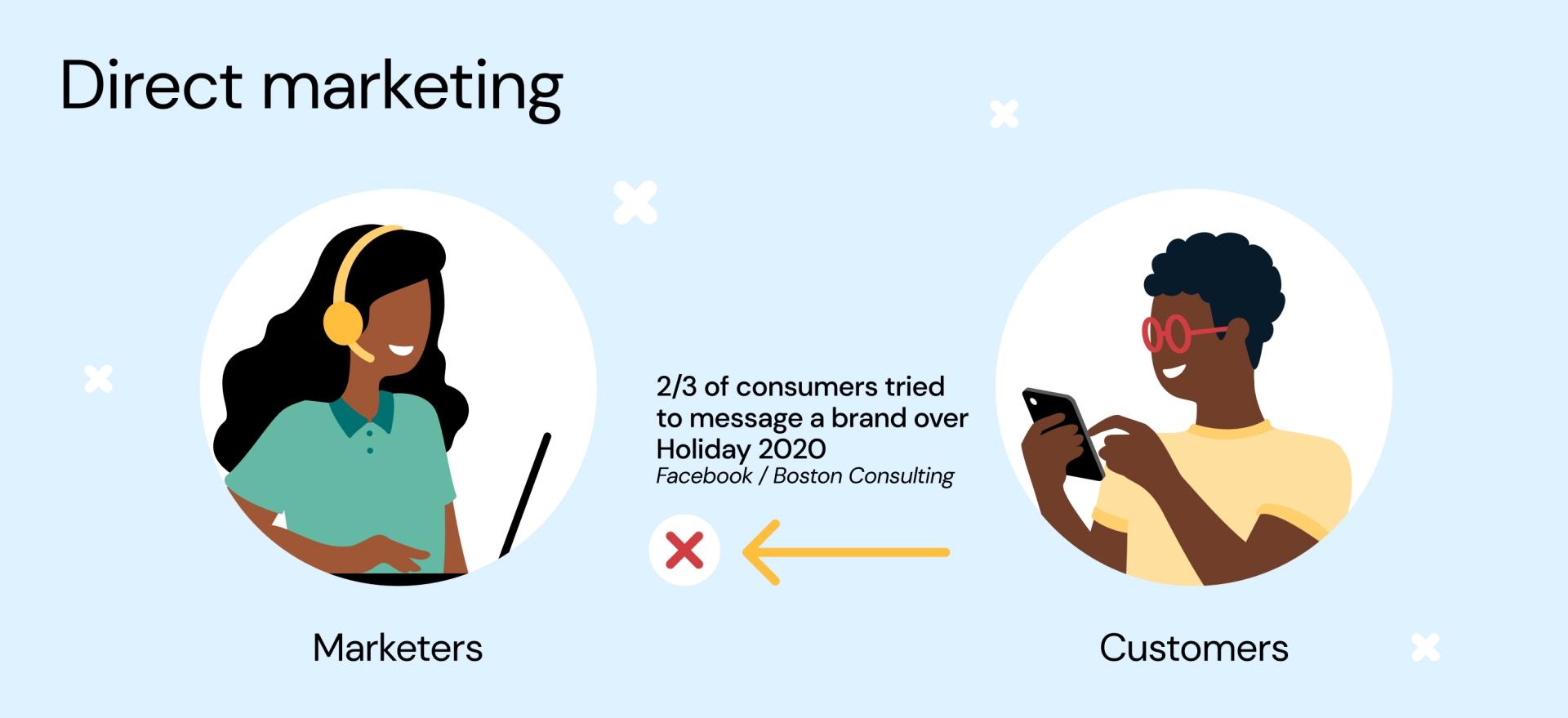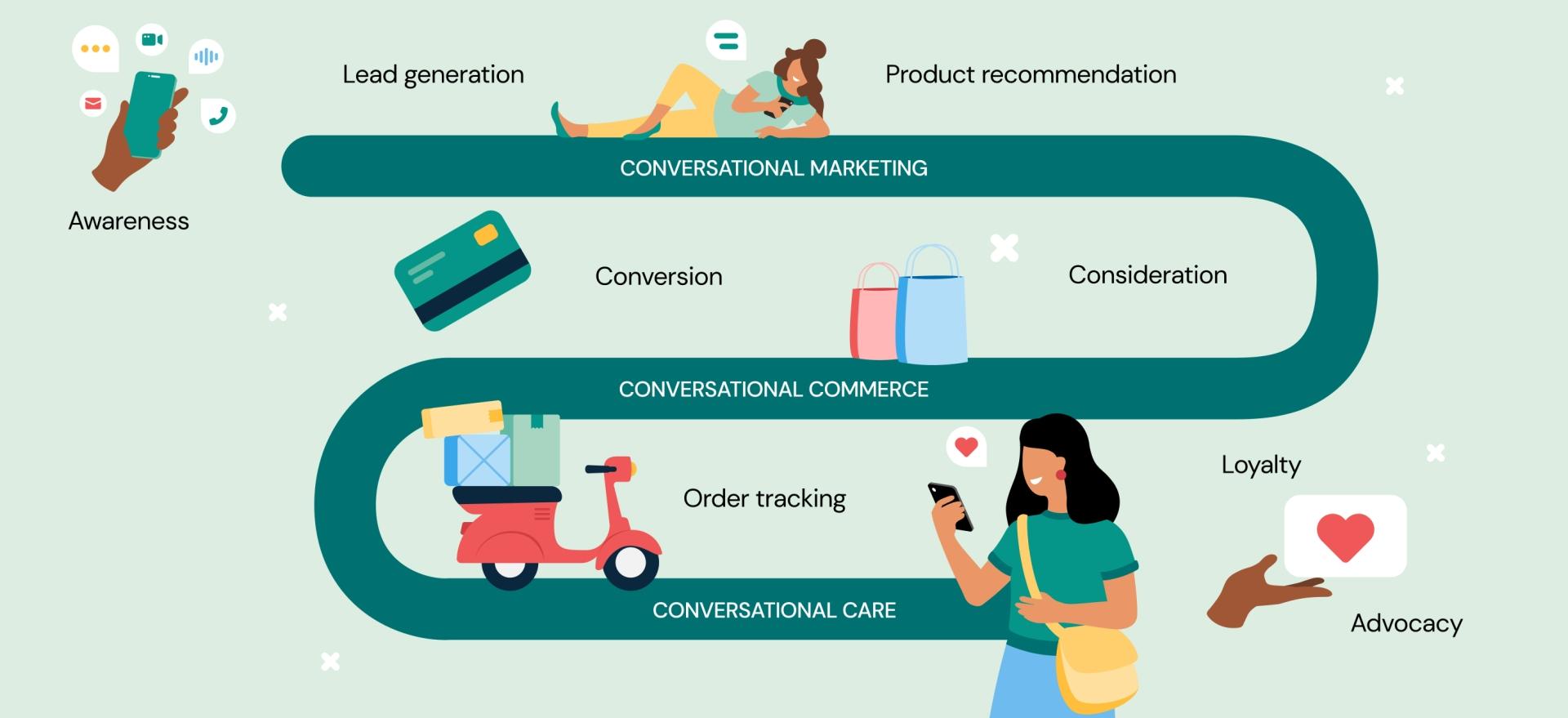96%!
That’s the typical rate of non-responders that marketers have come to expect from direct marketing campaigns. The inversion of this equation, a 4% conversion rate, is considered a reasonable return on investment, particularly at scale relative to the investment in the overall effort.
As a direct marketer, it’s always been astounding to me that after examining customers, identifying target groups, and skillfully crafting marketing messages, the vast majority people we are trying to reach don’t respond to our messages.
Imagine if they did?
Conversational messaging is the key to unlocking direct marketing
That’s the power of conversational marketing! It can unlock unmet needs within that non-responsive group, and ultimately increase conversions.
Of course, the million-dollar question is, “How do you get your customers to respond?”
Guess what? They already are!
Facebook and Boston Consulting found out that two-thirds of customers respond to direct marketing messages. However, when they do so, they are meeting a dead end!

On the one hand, we have marketers thinking that users aren’t responding to their messages. And on the other, we have customers who think that marketers ignore them. Where’s the disconnect?
The communication gap
There are two major problems with direct marketing campaigns.
First, marketers expect a specific response from users, such as a click on a link they provide. What they don’t expect are customers that have different needs.
Let’s say you send out a message promoting a special sale on screwdrivers. A customer sees it and remembers that they wanted to get a new toolbox. However, when they send a message back asking about toolbox deals, they hit a dead end because that’s not what marketers are prepared for.
Even if the customer hears back eventually, it’s probably too late. That’s the second problem with direct marketing campaigns. Users want an immediate response. However, direct marketing campaigns are typically not set up for two-way conversations, and by the time somebody answers customers, they have already found a toolbox somewhere else.
That’s where conversational messaging comes in: Instead of pushing out notifications telling customers what to do (“Click this!”, “Buy that!”), you need to invite them to start a conversation.
Welcome to the conversational era
Not surprisingly, conversational channels, such as SMS or Messenger from Meta, are at the heart of successful conversational marketing. Messaging is inherently conversational and more engaging.
Unlike push messages, these one-on-one conversations are more direct and more personal. Conversational messaging allows you to turn an audience of a million into a million audiences of one.
This will spark immersive conversations with your customers that will lead to more conversions.
Conversational messaging is also not limited to marketing activities. As “The Cluetrain Manifesto” stated way back in 1999: “...markets are conversational. This means that you can use messaging throughout every stage of the customer journey, from helping customers during their consideration phase to answering product questions to building loyalty.”

The 4 pillars of conversational messaging
A successful conversational approach is built on four pillars:
- Connect with your customers on their favorite channels
- Show, don’t tell
- Act like a friend
- Create meaningful conversations
1. Connect with your customers on their favorite channel
Tailor your conversational channels to your customers’ preferences. If they love SMS, send them text messages. If they live on WhatsApp, meet them there.
I firmly believe that the most successful conversational approach is to build solutions that fit your audience.
2. Show, don’t tell
According to Forrester, one minute of video is worth 1.8 million words. For instance, adding a video to a message can increase conversions by 86%.
Rich messaging will also improve customers’ first impression of your brand, and can lead to a 12% conversion rate on first purchase.
Use the tools that messaging channels offer to provide your customers with richer, more engaging experiences.
3. Act like a friend
When you talk to a customer on a messaging channel, you occupy the same environment as their friends and family. On messaging channels, users expect brands to be more personal as well. So, personalize your conversations and talk to your customers like you would to a friend. It’ll lead to more authentic and rewarding interactions.
4. Create meaningful conversations
Customers want a more direct exchange with brands. In the family of Meta messaging apps alone, one billion users reach out to a business every week. Meet your customers where they are and offer them the possibility to interact with you in meaningful two-way conversations.
As you can see, conversational messaging is a powerful tool — use it! It will not only help you grow your customer base and increase conversions, but also build stronger and longer-lasting connections with your customers.



